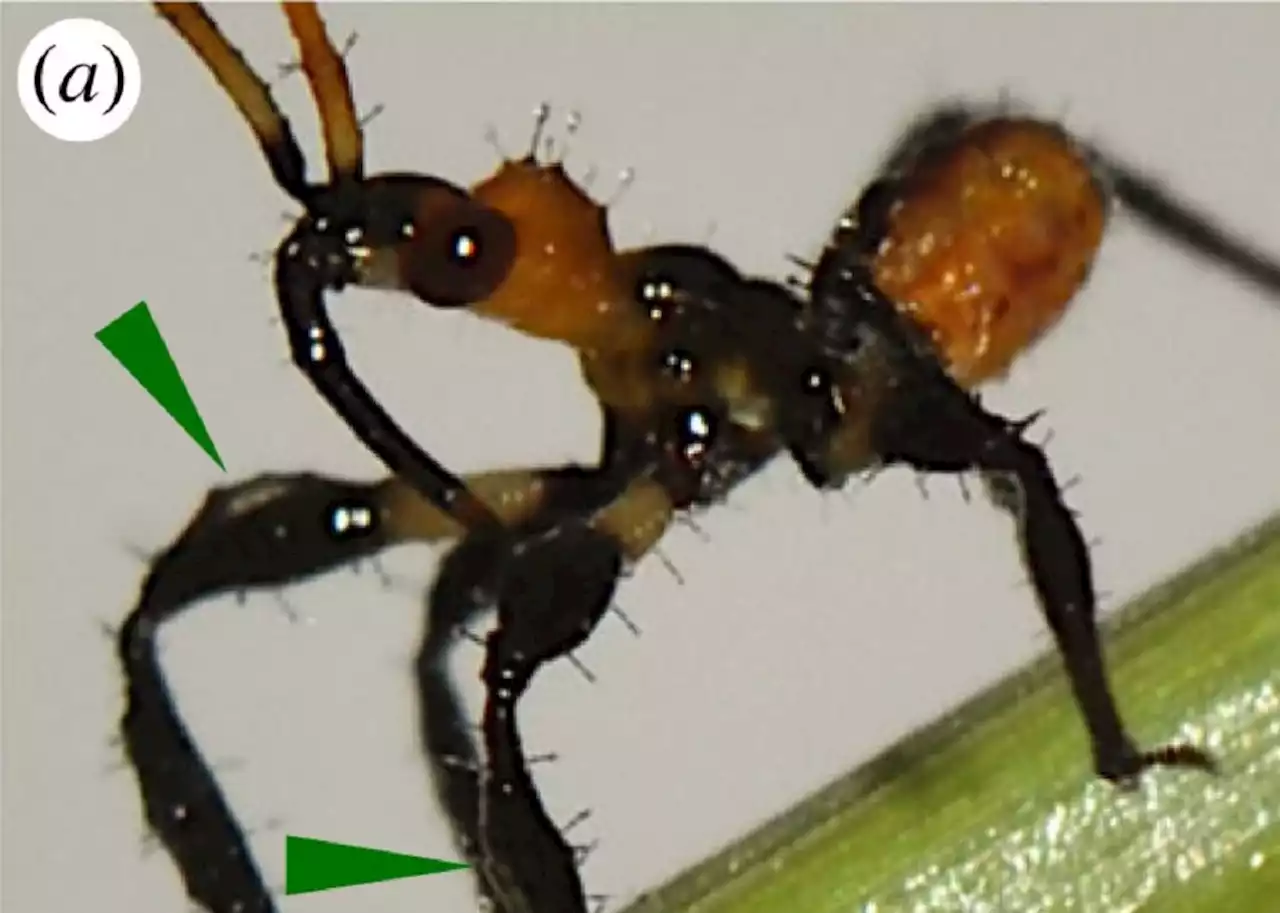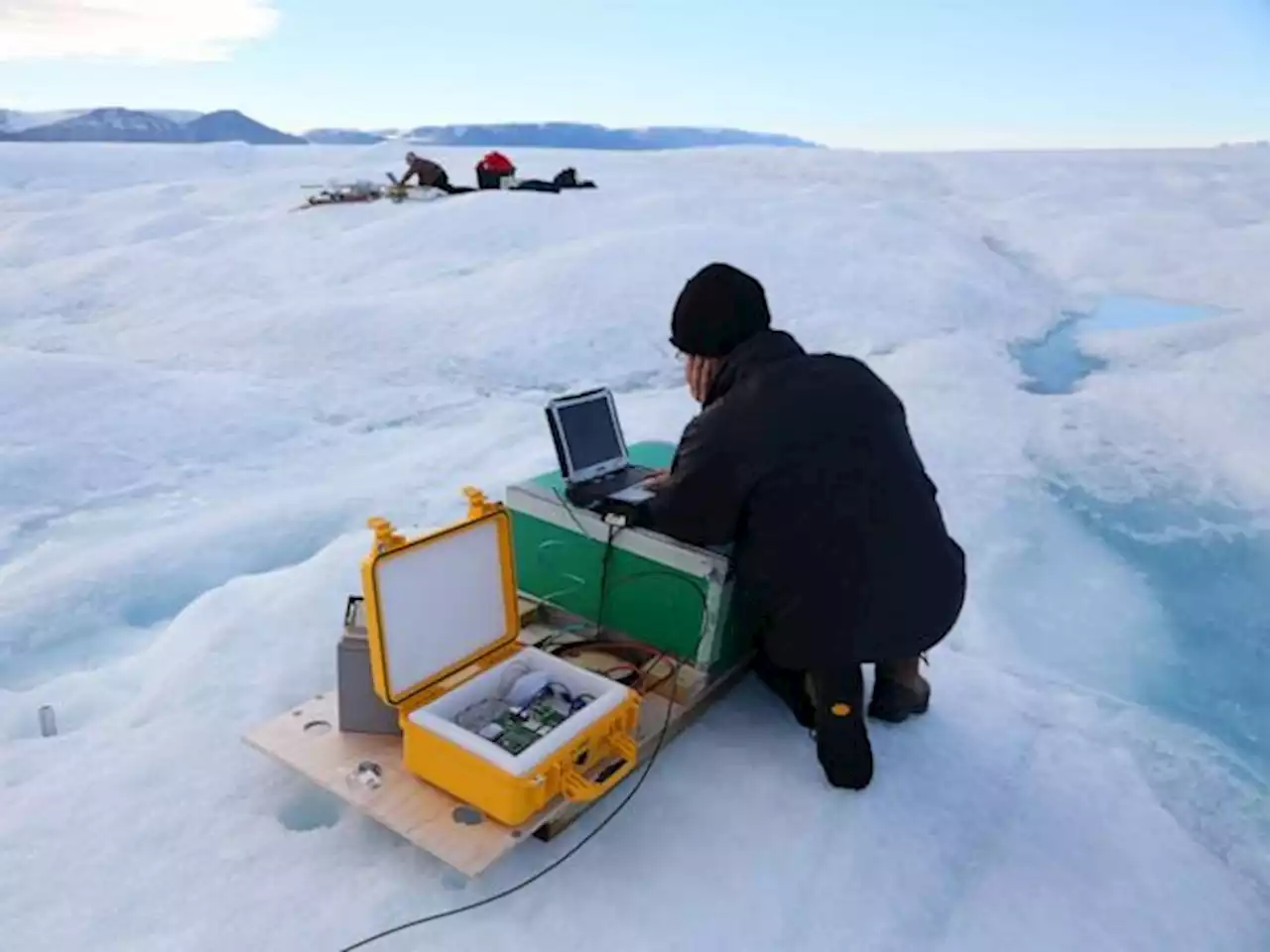Physicists at The Australian National University (ANU) are using nanoparticles to create innovative light sources that will allow us to “peel back the curtain” into the world of extremely tiny objects - objects that are thousands of times smaller than a human hair. This will lead to significant adva
An illustration showing a single nanoparticle converting low-frequency red light into extreme-ultraviolet light, which has a very high frequency. Credit: Anastasiia Zalogina/ANUare using nanoparticles to create innovative light sources that will allow us to “peel back the curtain” into the world of extremely tiny objects – objects that are thousands of times smaller than a human hair. This will lead to significant advancements in medical and other technological fields.
Being able to analyze such small objects could help scientists better understand and fight certain diseases and health conditions. “Another disadvantage of electron microscopy is that it may damage delicate samples being analyzed, whereas light-based microscopes mitigate this issue.” Although our eyes cannot detect infrared and ultraviolet light, it is possible for us to ‘see’ it using cameras and other technologies.
Dr. Kruk said the ANU technology could also be used in the semiconductor industry as a quality control measure to ensure a streamlined manufacturing process.
Singapore Latest News, Singapore Headlines
Similar News:You can also read news stories similar to this one that we have collected from other news sources.
 Origami Robotics: Scientists Push the Boundaries of Autonomous CapabilitiesA team led by UCLA created autonomous OrigaMechs without chips, utilizing conductive materials. Roboticists have adopted a method resembling the traditional art of paper folding to fabricate autonomous machines from thin, pliant sheets. These lightweight robots are more straightforward and cost-eff
Origami Robotics: Scientists Push the Boundaries of Autonomous CapabilitiesA team led by UCLA created autonomous OrigaMechs without chips, utilizing conductive materials. Roboticists have adopted a method resembling the traditional art of paper folding to fabricate autonomous machines from thin, pliant sheets. These lightweight robots are more straightforward and cost-eff
Read more »
 Scientists Spot Tragic Planet Being Eaten by a Dying StarUntil recently, scientists had never spotted a star in the act of consuming a planet — and eventually, it will happen to Earth, too.
Scientists Spot Tragic Planet Being Eaten by a Dying StarUntil recently, scientists had never spotted a star in the act of consuming a planet — and eventually, it will happen to Earth, too.
Read more »
 Scientists discovered a surge of unknown activity in people’s brains as they diedScientists have recorded mysterious brain activity in a dying person's brain which could help us better understand the human brain.
Scientists discovered a surge of unknown activity in people’s brains as they diedScientists have recorded mysterious brain activity in a dying person's brain which could help us better understand the human brain.
Read more »
 Scientists Discover Bug That Uses ToolScientists have discovered a new type of tool-using insect, nicknamed the 'assassin bug' for a creative — and deadly — hunting technique.
Scientists Discover Bug That Uses ToolScientists have discovered a new type of tool-using insect, nicknamed the 'assassin bug' for a creative — and deadly — hunting technique.
Read more »
Scientists identify genes that can repair the retina and reverse vision loss in humansThere is an army of dormant cells in our eyes that prefer to stay asleep. However, waking them up in patients living with degenerative retinal disease can prevent blindness.
Read more »
 Greenland Ice Sheet melting faster than previously thought, scientists sayScientists have determined that in the last 10 to 20 years of steady global warming, the ocean has played an 'important role' in the evolution of glaciers, Eric Rignot, professor of system science at the University of California, Irvine, and author of the study, told ABC News. Melting at the interface between ice sheets and the ocean in the Arctic is much more extensive than previously estimated, according to a study published Monday in Proceedings of the National Academy of Sciences. What is happening at the grounding line -- the junction between a grounded ice sheet and the ocean -- led the researchers to discover much more melting that previously thought at Petermann Glacier in Greenland, according to the paper.
Greenland Ice Sheet melting faster than previously thought, scientists sayScientists have determined that in the last 10 to 20 years of steady global warming, the ocean has played an 'important role' in the evolution of glaciers, Eric Rignot, professor of system science at the University of California, Irvine, and author of the study, told ABC News. Melting at the interface between ice sheets and the ocean in the Arctic is much more extensive than previously estimated, according to a study published Monday in Proceedings of the National Academy of Sciences. What is happening at the grounding line -- the junction between a grounded ice sheet and the ocean -- led the researchers to discover much more melting that previously thought at Petermann Glacier in Greenland, according to the paper.
Read more »
